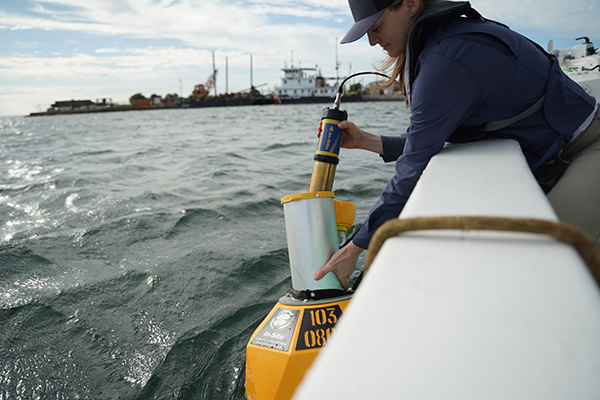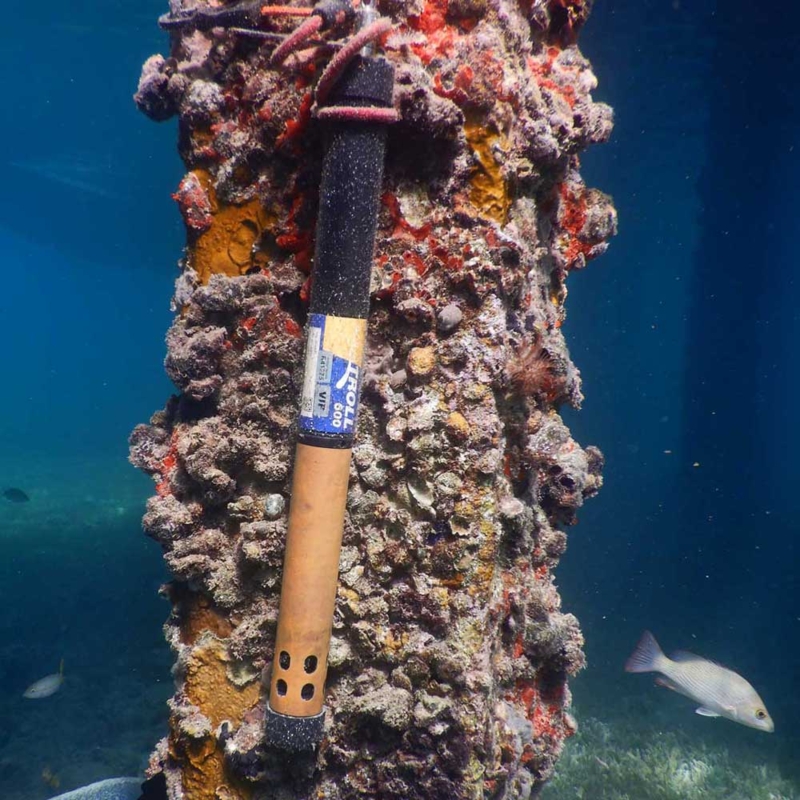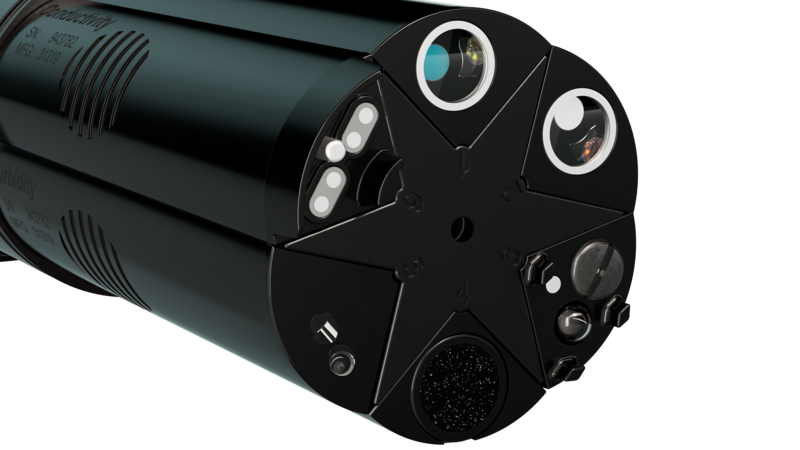Technology Minimizes Biofouling on In-Situ Instruments for Decision-Quality Data
Published on by Marcus Miller, Digital Marketing Manager at In-Situ in Case Studies
Technology Minimizes Biofouling on In-Situ Instruments for Decision-Quality Data
One of the biggest challenges of monitoring in aquatic environments is keeping instruments clean and free of sedimentation and biofouling. In both fresh and marine environments, benthic organisms are quick to colonize on instrumentation and deployment hardware used to collect environmental data.
Saltwater environments are particularly difficult to manage due to the variety of calcium carbonate-building species that will encrust almost any surface. Without proper preventive measures, these organisms will encrust the instrument and skew the data outputs or even damage the instrument itself. The photo below (r shows an In-Situ Aqua TROLL 600 fixed to an underwater piling in the Caribbean Sea. You can see from the minimal growth on the sonde that it hasn’t been there long. But in time barnacles and other sessile organisms will cover the instrument, unless antifouling technology and methods are used to protect it.
The Aqua TROLL Multiparameter Sonde has several native antifouling capabilities built into every instrument. They include:
Interlocking, Flat-Faced Sensors
The pie-shaped Aqua TROLL sensors are seated firmly against each other when installed on the sonde. A tight fit prevents organisms from growing and sediment from settling in between them.
The only areas within the sonde that are open for water flow, and therefore vulnerable to sediment and biofouling, are the sensor faces. But because they’re flat, without grooves or crevices, they’re easier to keep clean.
Restrictor
The Aqua TROLL Restrictor slips over the sensors and screws on with tight precision, minimizing space between the inside of the restrictor and the sensors so organisms...
Read More
Taxonomy
- Water Quality
- Coastal Engineering
- Hydrodynamics & Water Quality
- Water Monitoring
- Marine
- Saline Water
- Coastal
- Water Monitoring
- Water Systems Monitoring
- Water Quality Management
- Water Quality Training
- Water Quality Monitoring
- Coastal Erosion
- Water Quality Monitoring
- Marine Technologies
- Water quality
- Water Quality Research
- Water quality technician
- Water Quality Monitoring Sensor
- Water Quality


